The trek to Everest Base Camp isn’t just about reaching a destination; it’s a journey that tests limits and builds connections. Trekkers find themselves navigating stunning landscapes, charming villages, and the occasional challenging altitude adjustment, all while soaking in a culture that’s as rich as the scenery. They often wonder what they need to pack or when the best time to go is, and those details can make all the difference. As they gear up for this adventure, the real question looms—what’s the most essential tip that could transform their experience?
Good To Know
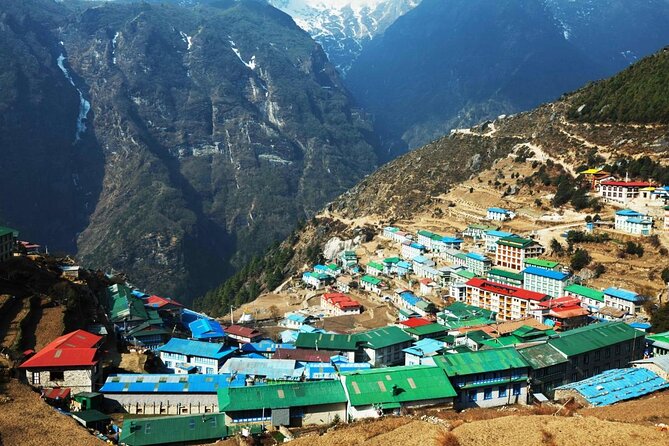
- The Everest Base Camp trek offers stunning views and requires acclimatization due to high altitudes exceeding 5,000 meters.
- Trekkers typically start in Kathmandu, flying to Lukla before hiking through picturesque villages like Namche Bazaar.
- Essential inclusions include private transport, medical insurance, and a two-night hotel stay in Kathmandu for pre-trek preparation.
- Best times to trek are April to early June and late September to November, offering mild weather and clear skies.
- Proper preparation, including fitness training and packing essential gear, is crucial for a successful trekking experience.
Overview of the Trek
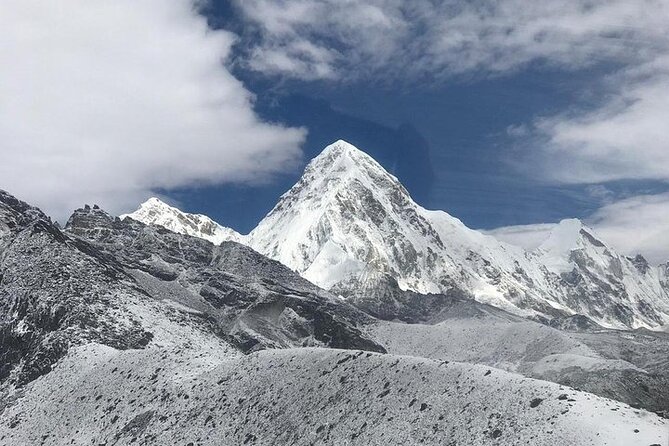
The Everest Base Camp trek stands out as an incredible adventure that combines breathtaking scenery with a thrilling challenge.
Nestled in the heart of the Himalayas, this trek attracts adventurers from all over the world, eager to experience the stunning views of towering snow peaks and majestic glaciers.
With an altitude exceeding 5,000 meters, it isn’t just a walk in the park; it’s a serious trek that demands preparation and respect for the mountains.
Travelers rave about the well-organized itineraries and the friendly, knowledgeable guides who make the experience memorable.
Plus, the camaraderie among trekkers adds a unique touch.
Anyone looking for a mix of natural beauty and personal challenge will find the Everest Base Camp trek hard to beat!
Detailed Itinerary
For those ready to lace up their hiking boots, the detailed itinerary of the Everest Base Camp trek lays out an exciting journey through some of the most stunning landscapes on Earth.
Starting in Kathmandu, trekkers fly to Lukla, then hike to Phakding. The route winds through vibrant Namche Bazaar, gives time to acclimatize, and continues to Tengboche and Dingboche.
With strategic acclimatization days, trekkers prepare for the high altitudes ahead. The trek culminates at Everest Base Camp, where the breathtaking views make every step worth it.
After soaking in the sights, the journey back includes an ascent to Kalapatthar for panoramic views. This itinerary balances challenge and beauty, ensuring an unforgettable experience.
Essential Inclusions
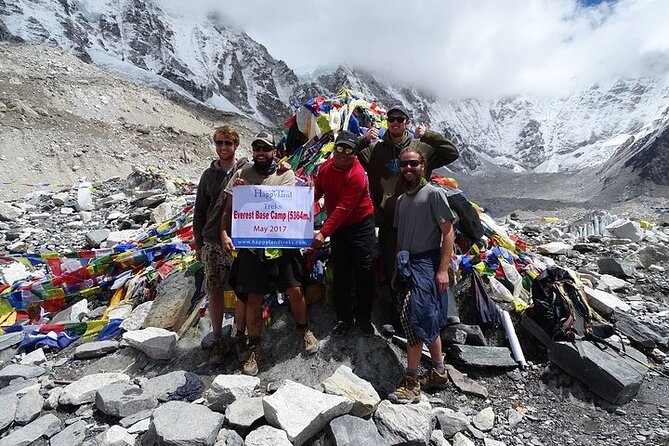
Trekking to Everest Base Camp is a thrilling adventure, and having the right inclusions can make all the difference.
First up, travelers appreciate the private transport for airport pickups and drop-offs, ensuring a smooth start and finish to the trek. A two-night hotel stay in Kathmandu, complete with breakfast, gives trekkers a chance to recharge before hitting the trails.
Plus, travel medical insurance and emergency evacuation costs are essential for peace of mind in the unpredictable Himalayas. While food and drinks on the trail aren’t included, this allows trekkers to explore local cuisine.
With these essential inclusions, adventurers can focus on soaking in the stunning views and memorable experiences without any worries.
Meeting Point Information
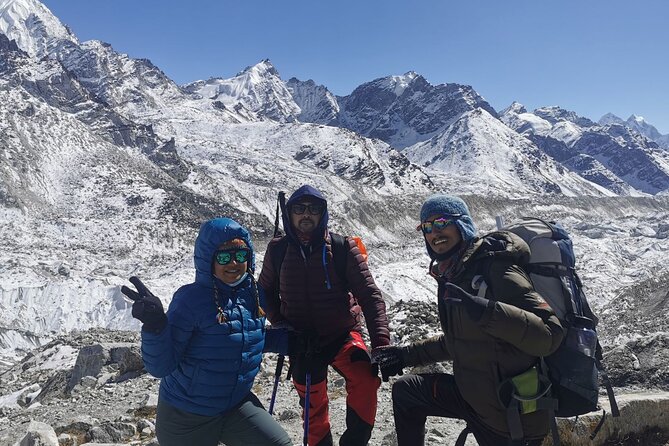
Meeting up for the Everest Base Camp trek is easy and convenient. Travelers gather at Happyland Treks, located on Paknajol Marg in Kathmandu. This spot serves as a central meeting point, making it simple for trekkers to find each other and their guides.
Plus, the atmosphere is welcoming, setting the tone for the adventure ahead. For those staying at nearby hotels, bus stations, or even restaurants and monasteries, pickup options are available, ensuring no one gets left behind.
The guides, always punctual and friendly, help everyone feel at ease. With clear directions and a laid-back vibe, participants can focus on the exciting journey ahead, knowing they’re in good hands right from the start.
Customer Experiences
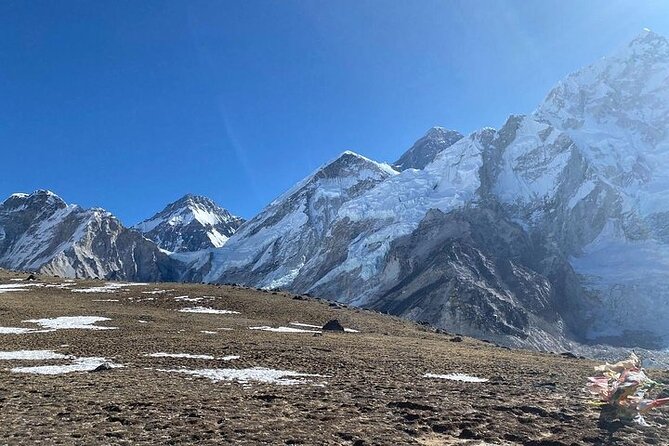
Travelers rave about their experiences on the Everest Base Camp trek, sharing stories that sparkle with excitement and adventure. Many highlight how the trek exceeded their expectations, thanks to the stunning landscapes and supportive guides.
-
Guides like Bimal and Pramish receive high praise for their friendliness and expertise.
-
The food, often a concern on treks, is noted for being hygienic and delicious.
-
Travelers appreciate the well-organized itinerary, making each day enjoyable and manageable.
-
Breathtaking views leave lasting impressions, often captured in stunning photos.
The trek creates unforgettable memories, solidifying its status as a must-do for adventure seekers.
Each journey to Everest Base Camp turns into a remarkable tale of resilience and beauty.
Preparation Tips
.jpg)
Preparing for the Everest Base Camp trek can feel overwhelming, but with the right tips, it becomes a manageable and exciting challenge.
First off, building your fitness is key; aim for regular cardio workouts and some strength training to tackle those steep trails.
Next, familiarize yourself with high-altitude trekking; understanding altitude sickness can make a huge difference.
It’s also smart to check the weather patterns in advance, as conditions can change rapidly.
Don’t forget to mentally prepare for the trek; visualizing the journey can boost your confidence.
Lastly, consider joining a group or hiring a guide; their experience can provide invaluable support.
With these preparation tips, trekkers can approach the adventure with a sense of readiness and enthusiasm.
Packing List
.jpg)
After getting fit and mentally gearing up for the trek, the next step is tackling the packing list.
It’s essential to be well-prepared without overpacking. The right gear can make a world of difference on the trail, especially with unpredictable weather and altitude changes.
Here are some must-have items:
- Trekking poles – They provide stability and reduce strain on your knees.
- Down jacket – Keeps you warm during chilly evenings and mornings.
- Waterproof backpack – Protects your gear from rain and snow.
- Layered clothing – Allows for easy temperature regulation.
- First-aid kit – Essential for dealing with minor injuries or ailments.
With these essentials, trekkers will be ready to take on the majestic journey to Everest Base Camp.
Best Time to Visit
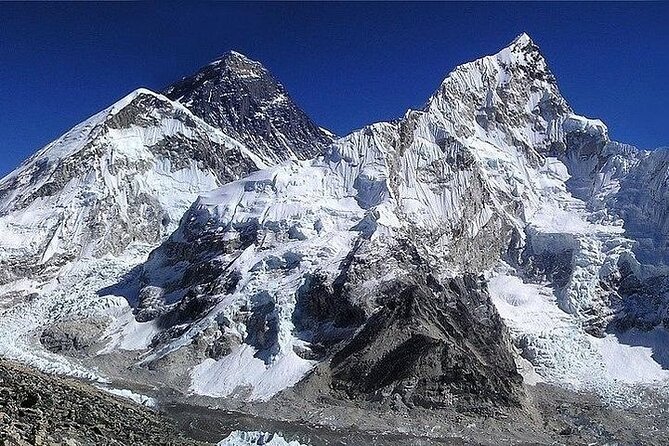
Choosing the best time to visit Everest Base Camp can significantly enhance the trekking experience. Generally, the best months are pre-monsoon (April to early June) and post-monsoon (late September to November). During these periods, trekkers enjoy clear skies, stunning views, and pleasant temperatures.
Here’s a quick look at the conditions:
| Month | Weather | Trekking Conditions |
|---|---|---|
| April | Mild | Great visibility |
| May | Warm | Crowded at EBC |
| October | Cool | Clear, less crowded |
| November | Cold | Quiet, fewer trekkers |
Frequently Asked Questions
What Is the Average Daily Walking Distance During the Trek?
During the trek, the average daily walking distance varies, typically around 8 to 15 kilometers. Travelers find this manageable, allowing them to enjoy the stunning scenery while acclimatizing to higher altitudes without feeling rushed.
Are There Any Age Restrictions for Participants?
There aren’t strict age restrictions for participants, but most guides recommend that trekkers be at least 12 years old. Younger trekkers should ensure they’re physically prepared and can handle the trek’s challenges. It’s all about readiness!
What Is the Altitude Sickness Prevention Strategy?
To prevent altitude sickness, travelers should acclimatize gradually, stay hydrated, and ascend slowly. They should listen to their bodies, taking rest days when needed, and consult guides for tailored advice. It’s essential to prioritize health.
How Can I Stay Connected During the Trek?
During the trek, he can stay connected by using a portable charger for his devices and purchasing a local SIM card. Wi-Fi’s available in some lodges too, but it might be spotty at higher altitudes.
What Safety Measures Are in Place for Emergencies?
For emergencies, the team’s got first aid kits, experienced guides trained in rescue techniques, and communication devices. They’re always prepared to handle unexpected situations, ensuring everyone stays safe and sound throughout their adventure.
The Sum Up
In the end, the trek to Everest Base Camp isn’t just a hike; it’s a life-changing adventure filled with stunning views, rich culture, and amazing people. Whether you’re pushing your limits or soaking in the beauty of the Himalayas, you’ll walk away with memories that last a lifetime. So lace up those boots, pack your bags, and get ready for an unforgettable journey that’ll leave you craving more mountain magic. Happy trekking!
